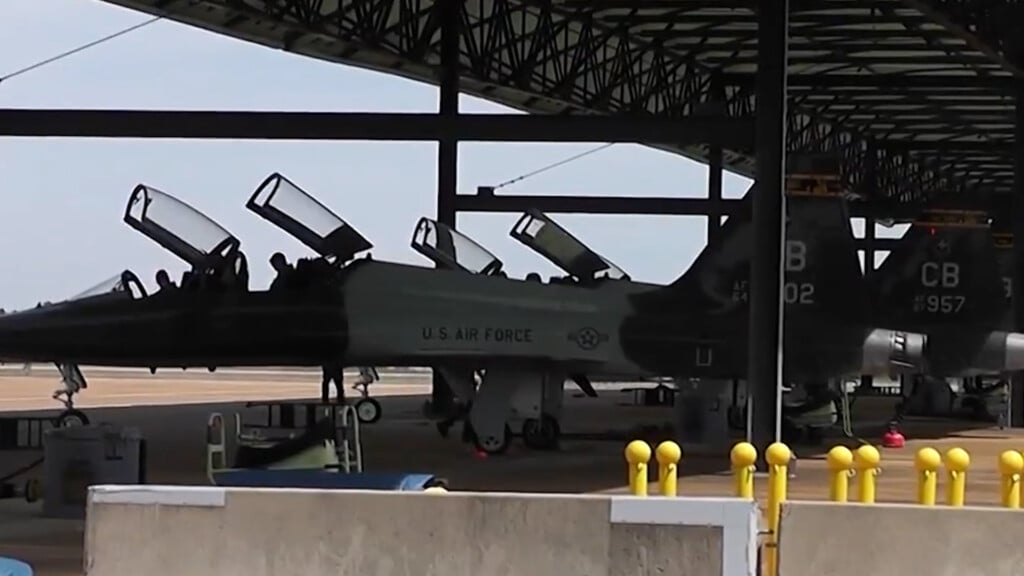Iuka Plant Helps Take Orion Into Space
By Marcia Dunn/AP Aerospace Writer
CAPE CANAVERAL, Fla. – NASA’s new Orion spacecraft, complete with parts made at ATK Aerospace Structures in Iuka, Miss., made a “bull’s-eye” Pacific splashdown Friday following a dramatic journey 3,604 miles beyond Earth. The achievement opens a new era of human exploration to put people on Mars.
The unmanned, 4 1/2-hour test flight set at least one record: flying farther and faster than any capsule built for humans since the Apollo moon program.
“There’s your new spacecraft, America,” Mission Control commentator Rob Navias said as the Orion capsule neared the water 270 miles off Mexico’s Baja peninsula.
NASA is counting on future Orions to carry astronauts beyond Earth’s orbit in the decades ahead, to asteroids and ultimately the grand prize: Mars.
The lead flight director, Mike Sarafin, was emotional as he signed off from Houston.
“We challenged our best and brightest to continue to lead in space,” Sarafin said. “While this was an unmanned mission, we were all on board Orion.”
The agency quickly reported positive results: Not only did the capsule arrive intact, all the parachutes deployed and onboard computers withstood the intense radiation of the Van Allen belts surrounding Earth.
The capsule reached a peak altitude more than 14 times farther from our planet than the International Space Station. No spacecraft designed for astronauts had gone so far since Apollo 17 – NASA’s final moon shot – 42 years ago.
NASA needed to send Orion that high in order to set the crew module up for a 20,000-mph, 4,000-degree entry. That was considered the most critical part of the entire flight – testing the largest of its kind heat shield for survival before humans climb aboard.
In 11 minutes, Orion slowed from 20,000 mph to 20 mph at splashdown, its final descent aided by eight parachutes deployed in sequence. A crew on board would have endured as much as 8.2 Gs, or 8.2 times the force of Earth gravity, double the Gs of a returning Russian Soyuz capsule, according to NASA.
Earth shrank from view through Orion’s capsule window during its trip out to space, and stunning images were relayed back home. Its return was recorded by an unmanned drone flying over the recovery zone, providing more spectacular views. Helicopters then relayed images of the crew module bobbing in the water. Three of the five air bags deployed properly, enough to keep the capsule floating upright.
The U.S. Navy pulled up in a pair of ships to recover the spacecraft and transport it to San Diego, 630 miles away. Orion ended up just 1 1/2 miles from the predicted splashdown spot. Only two of the parachutes could be recovered.
ATK’s manufacturing facility in Iuka, Mississippi supplied the composite Ogive panels that make up the exterior skin of the Orion crew module and provide protection from the extreme temperatures of space. The facility also provided the 12 key composite structures for the Delta IV launch vehicle including three thermal shields that house and protect the engines during flight, three centerbody structures that connect the liquid oxygen (LO2) and liquid hydrogen (LH2) tanks, two medium and one heavy skirt on the three Common Booster Cores (CBC), the composite interstage on the center CBC, the nose cones on the two strap-on boosters and one set of X-panel structures that connect the upper stage LOX tank with the upper stage hydrogen tank.
The larger composite structures, manufactured in Iuka, measure four to five meters in diameter and range from one to 15 meters in length. The large composite structures are all produced using advanced hand layup, machining and inspection techniques. The composite X-panels were produced at ATK’s facility in Clearfield, Utah.
Once ashore, Orion will be transported by truck back to Cape Canaveral, just in time for Christmas.
It’s supposed to soar again in 2017 in a launch abort test, followed by a second Orion heading to space in 2018 aboard the megarocket under development by NASA. Officials expect it will be at least seven years from now – 2021 – before Orion carries people, given present budget constraints.
‘One step closer’
Orion’s debut was intended to be brief – just two laps around Earth, shorter than even John Glenn’s orbital achievement in 1962.
NASA is now “one step closer” to putting humans aboard Orion, said NASA Administrator Charles Bolden Jr. He called it “Day One of the Mars era.”
Earlier Friday, everything went NASA’s way as the powerful Delta IV rocket lifted Orion into orbit.
The atmosphere was reminiscent of the shuttle-flying days, but considerably more upbeat than that last mission in 2011.
Astronaut Rex Walheim was aboard the final shuttle flight and joined dozens of space fliers on hand for this historic send-off. He talked up Orion’s future in sending crews to Mars and the importance of becoming what he called “a multi-planetary species.”
The Orion would be supplemented with habitats for Mars trips, which would take eight months using current rockets. NASA hopes improving technology will speed the journey.
“You have that excitement back here at the Kennedy Space Center and it’s tinged with even more excitement with what’s coming down the road,” Walheim said.
Orion’s team got a shout-out from the team handling Curiosity, the rover now on Mars. “Congrats (hash)Orion! We’re one step closer to bootprints next to these rover tracks,” said their tweet, which was posted with a picture of one of the rover’s treaded wheels on the dusty red surface.
In Houston, NASA’s Mission Control led the entire operation once Orion was aloft, allowing the spacecraft to fly essentially on autopilot, although veterans of shuttle flights could have intervened if necessary.
The spacecraft was rigged with 1,200 sensors to gauge everything from heat to vibration to radiation. At 11 feet tall with a 16.5-foot base, Orion is bigger than the old-time Apollo capsules and, obviously, more advanced. It could carry four astronauts, one more than Apollo, on long treks, six on relatively short voyages of three weeks.
NASA deliberately kept astronauts off this first Orion.
Managers wanted to test the riskiest parts of the spacecraft – the heat shield, parachutes, various jettisoning components – before committing to a crew.
This Orion – serial number 001 – lacked seats, cockpit displays and life-support equipment, but brought along bundles of toys and memorabilia: bits of moon dust; the crew patch worn by Sally Ride, America’s first spacewoman; a Capt. James Kirk doll owned by “Star Trek” actor William Shatner.
Lockheed Martin Corp. already has begun work on a second Orion and plans to build a fleet of the capsules. An asteroid redirected to lunar orbit is intended for the first stop in the 2020s, followed by Mars in the 2030s.
The company handled the $370 million test flight for NASA, opting for the Delta IV, the most powerful unmanned rocket in the U.S. right now. The entire rocket and capsule, topped by a launch abort tower, stretched 242 feet and weighed 1.6 million pounds – an “incredible monster,” according to Bolden.
To push Orion farther out on future flights, NASA is developing the Space Launch System or SLS, megarocket. The first Orion-SLS combo will fly around 2018, again without a crew to shake out the rocket, although it will be capable of carrying four astronauts on long hauls and as many as six on three-week hikes.
Bolden, a former astronaut and now NASA’s No. 1, called Mars “the ultimate destination of this generation,” but said his three young granddaughters think otherwise, telling him, “Don’t get hung up on Mars because there are other places to go once we get there.”
–––––
Associated Press reporter Alex Sanz contributed to this report from Cape Canaveral.





Leave a Reply